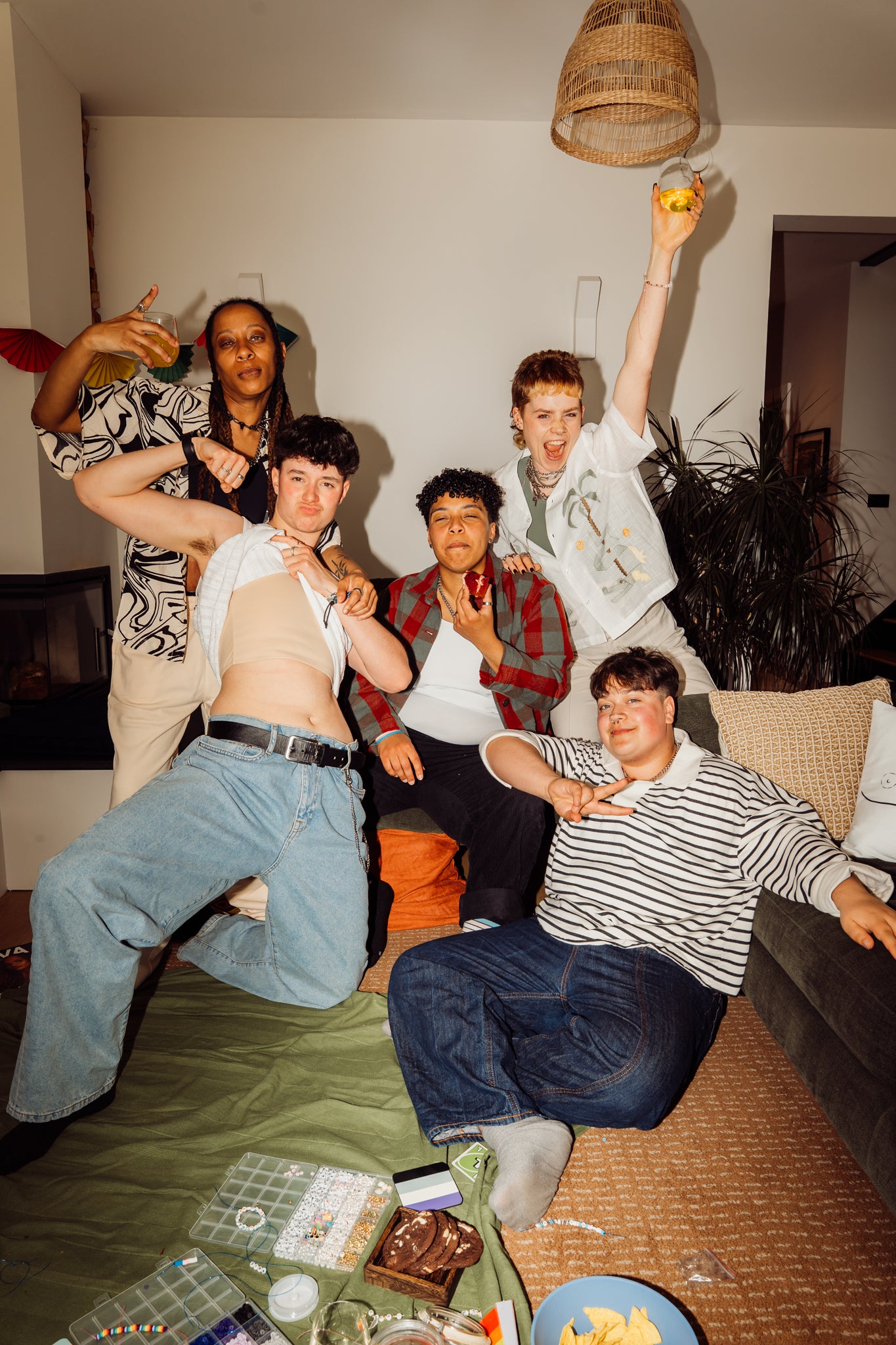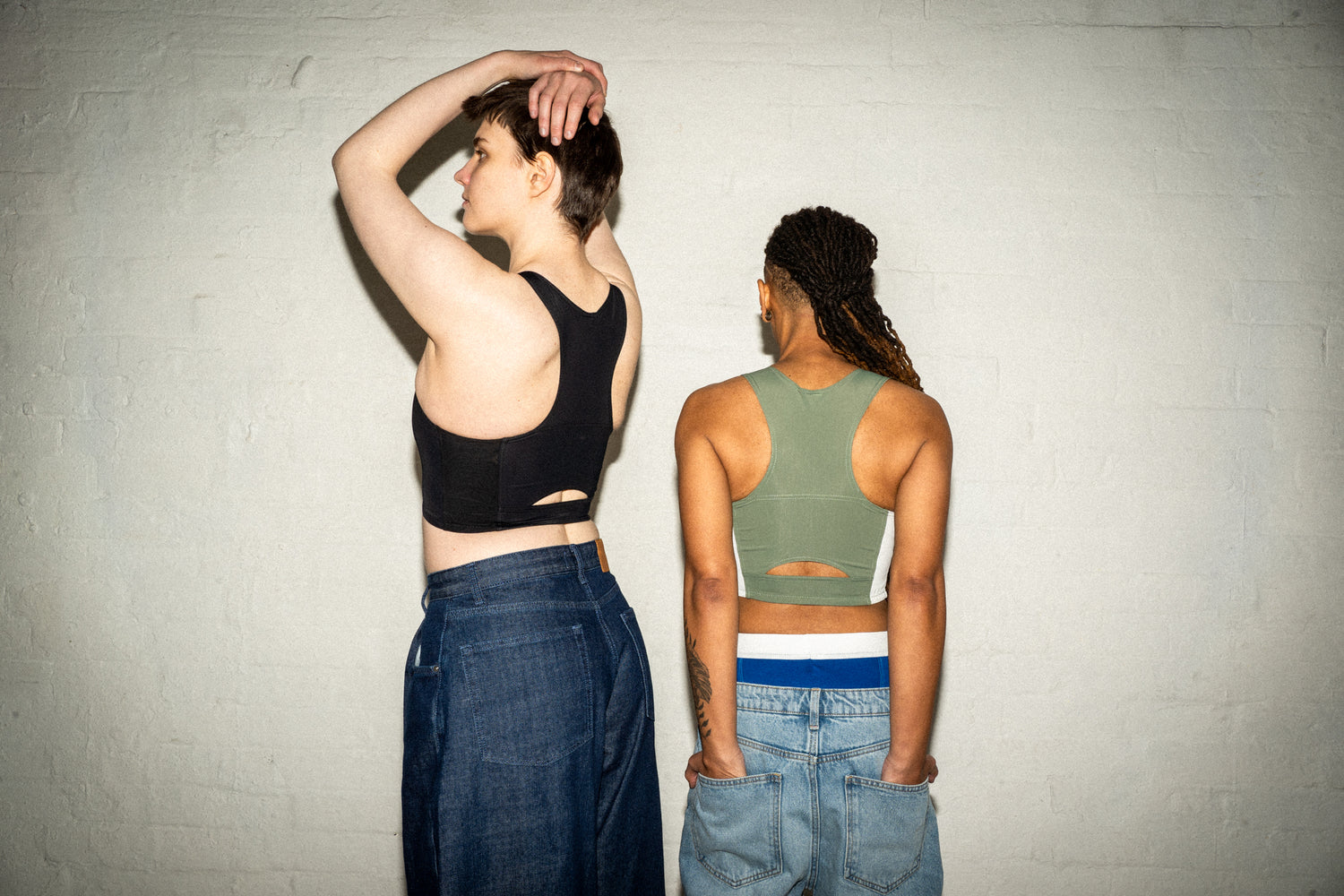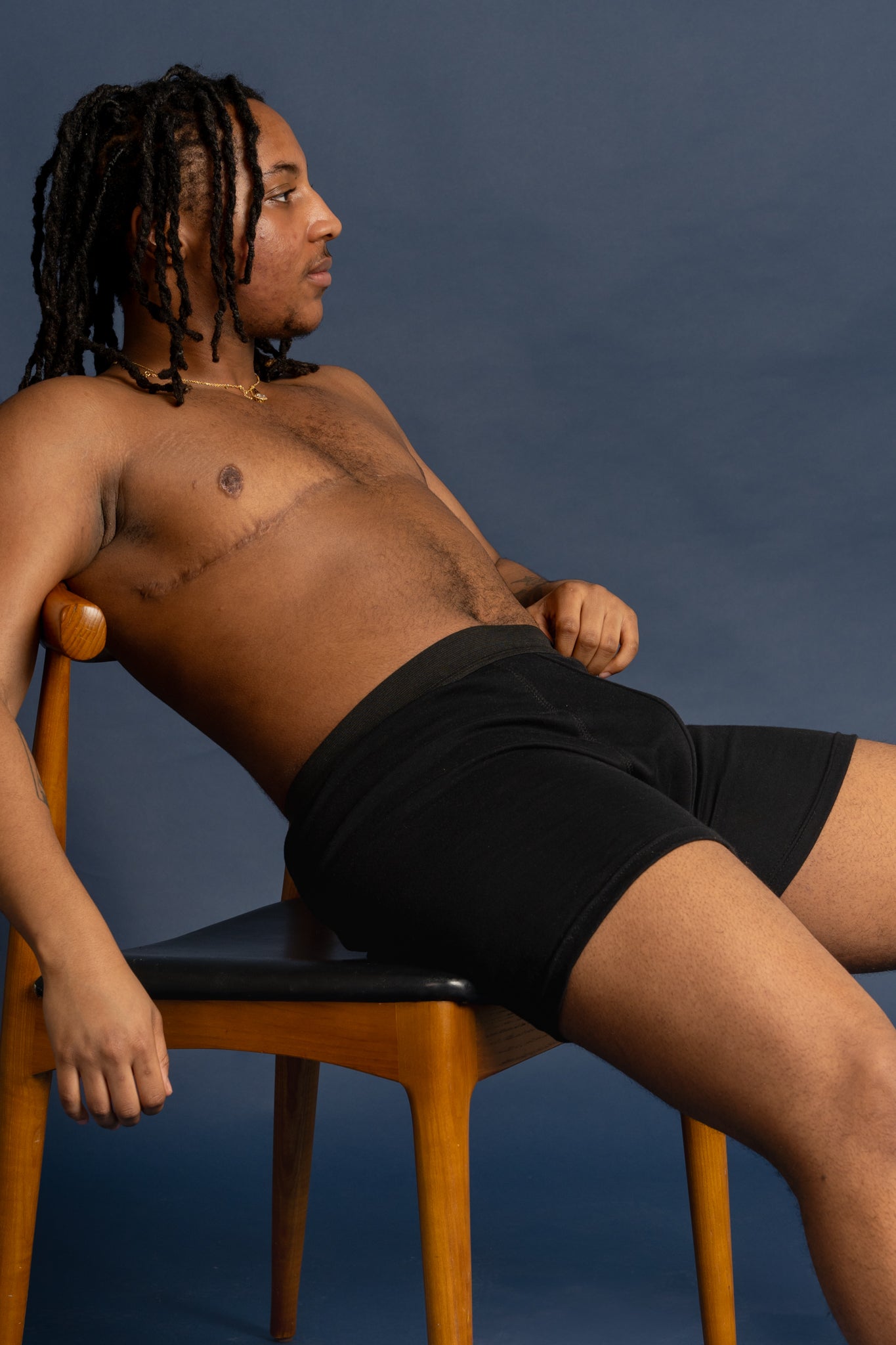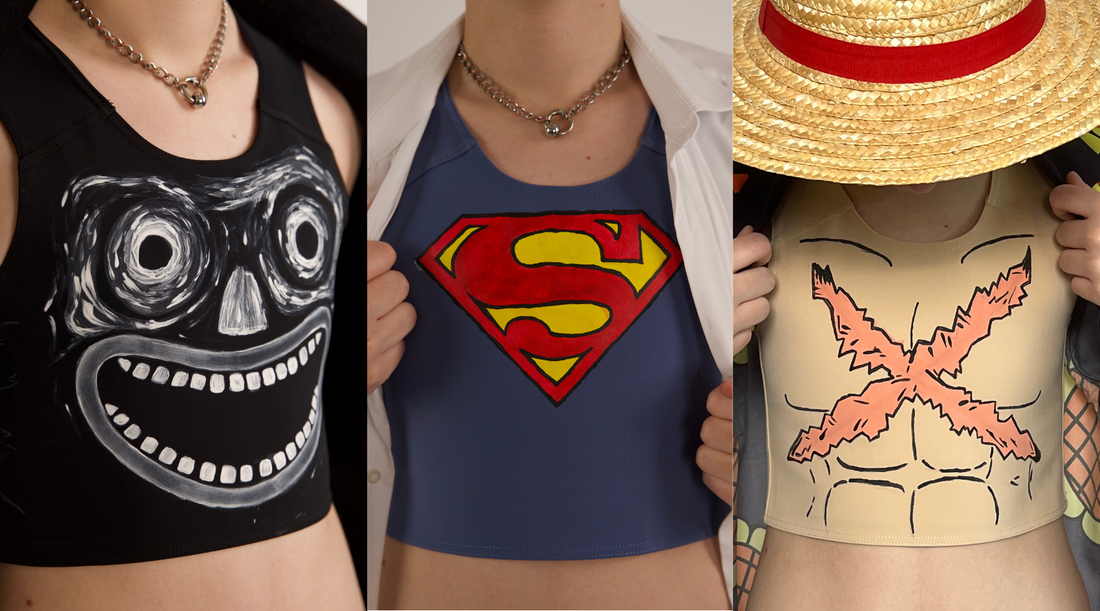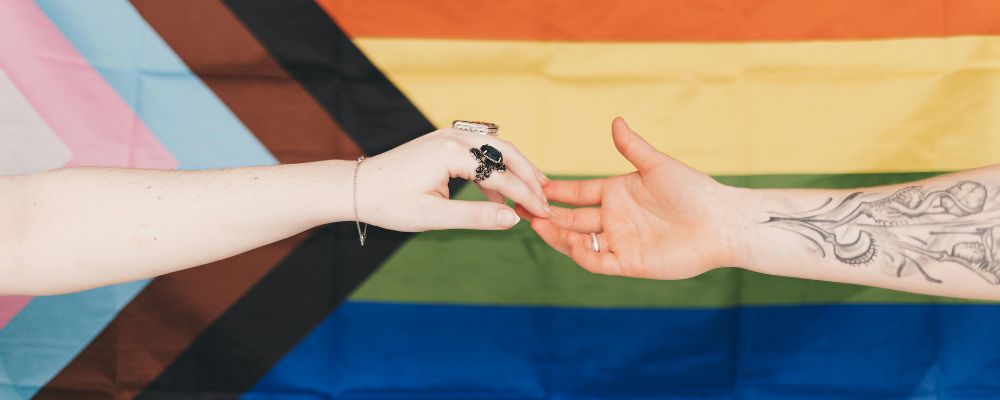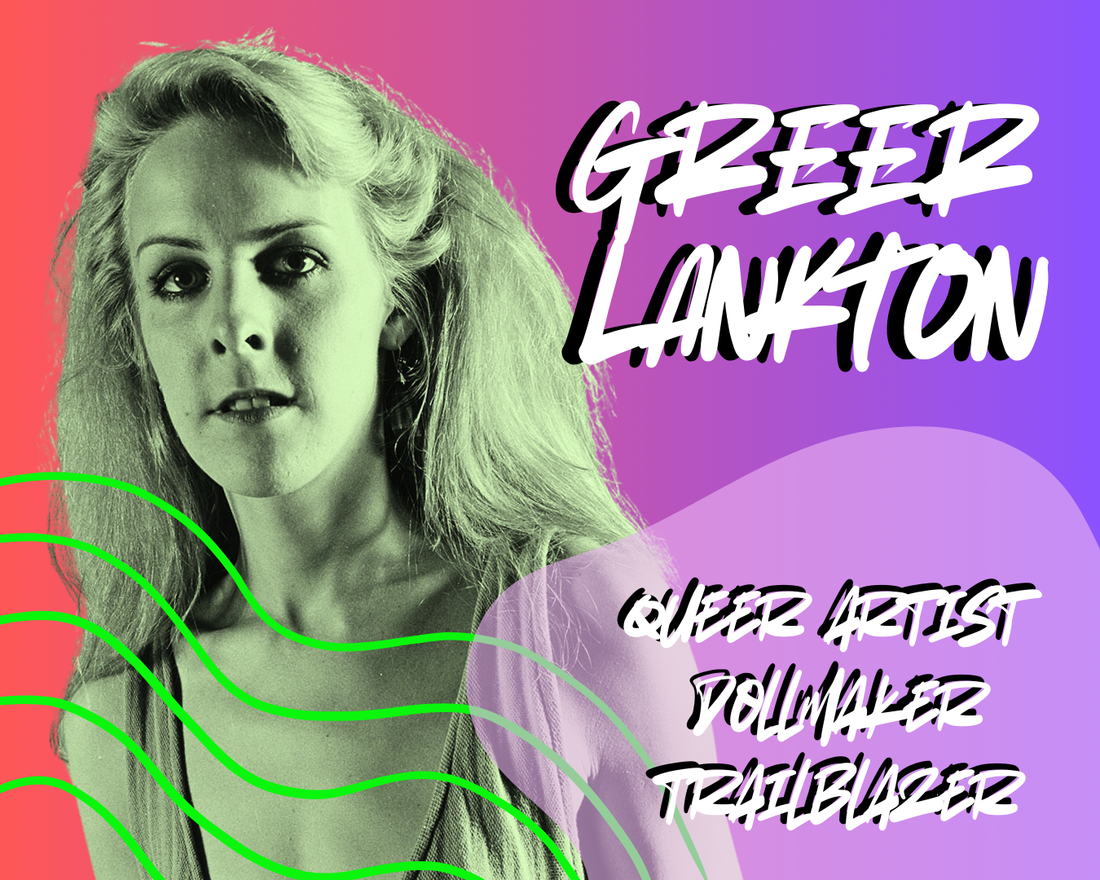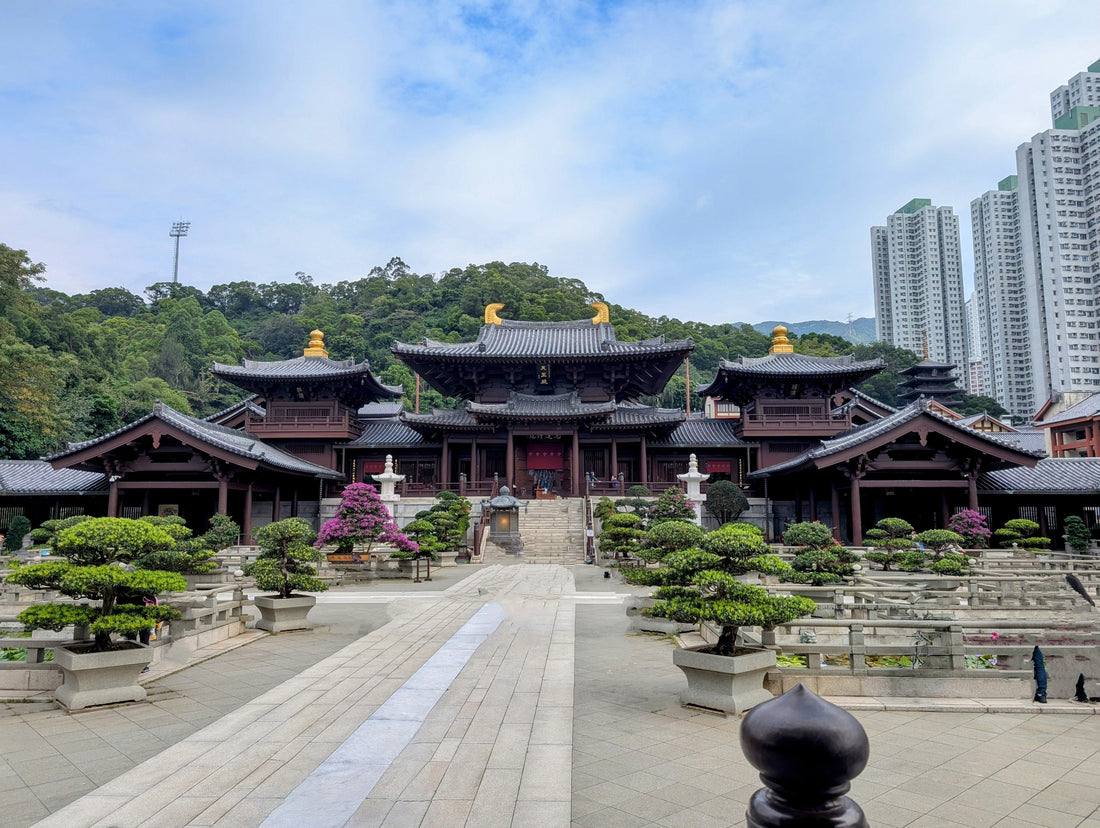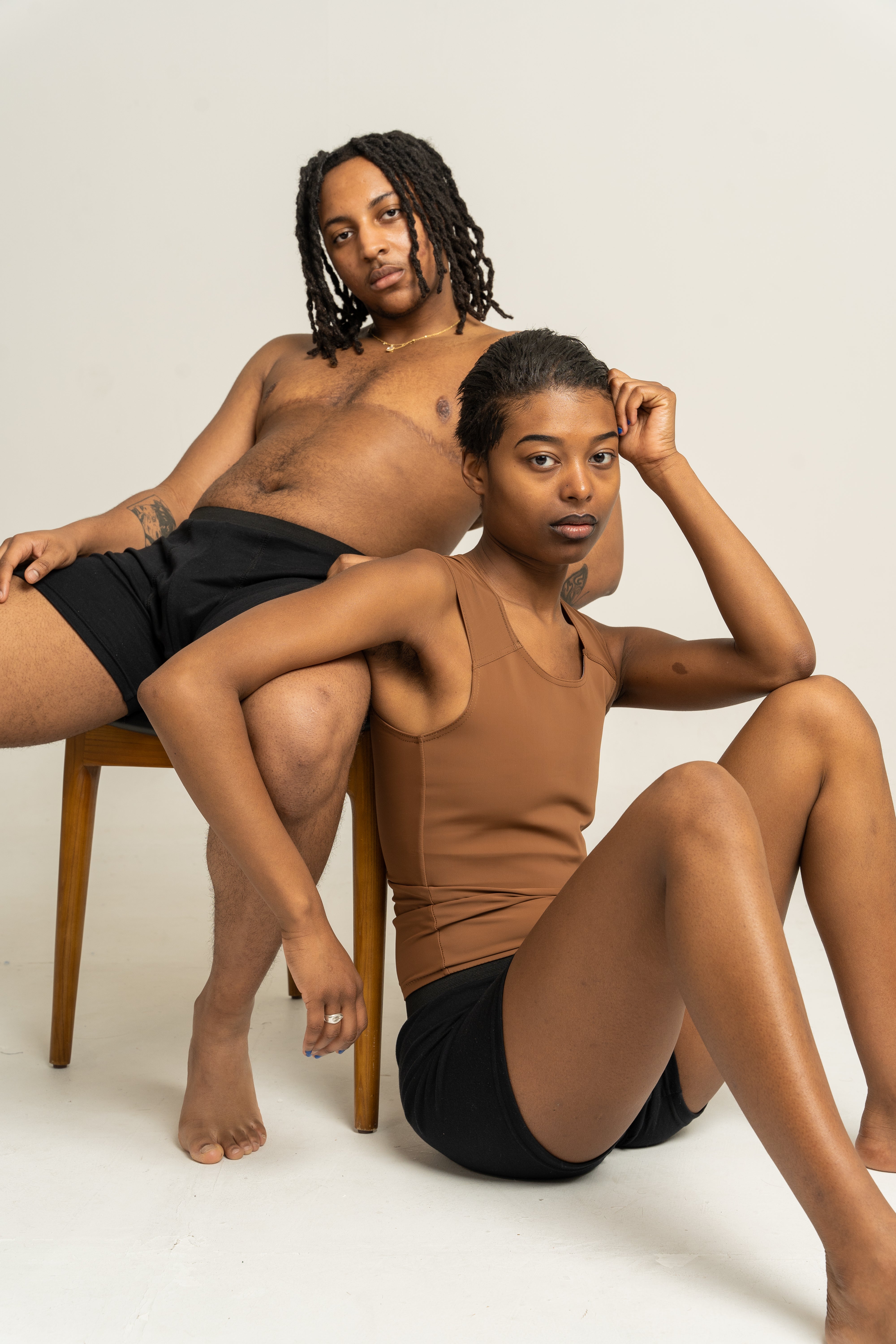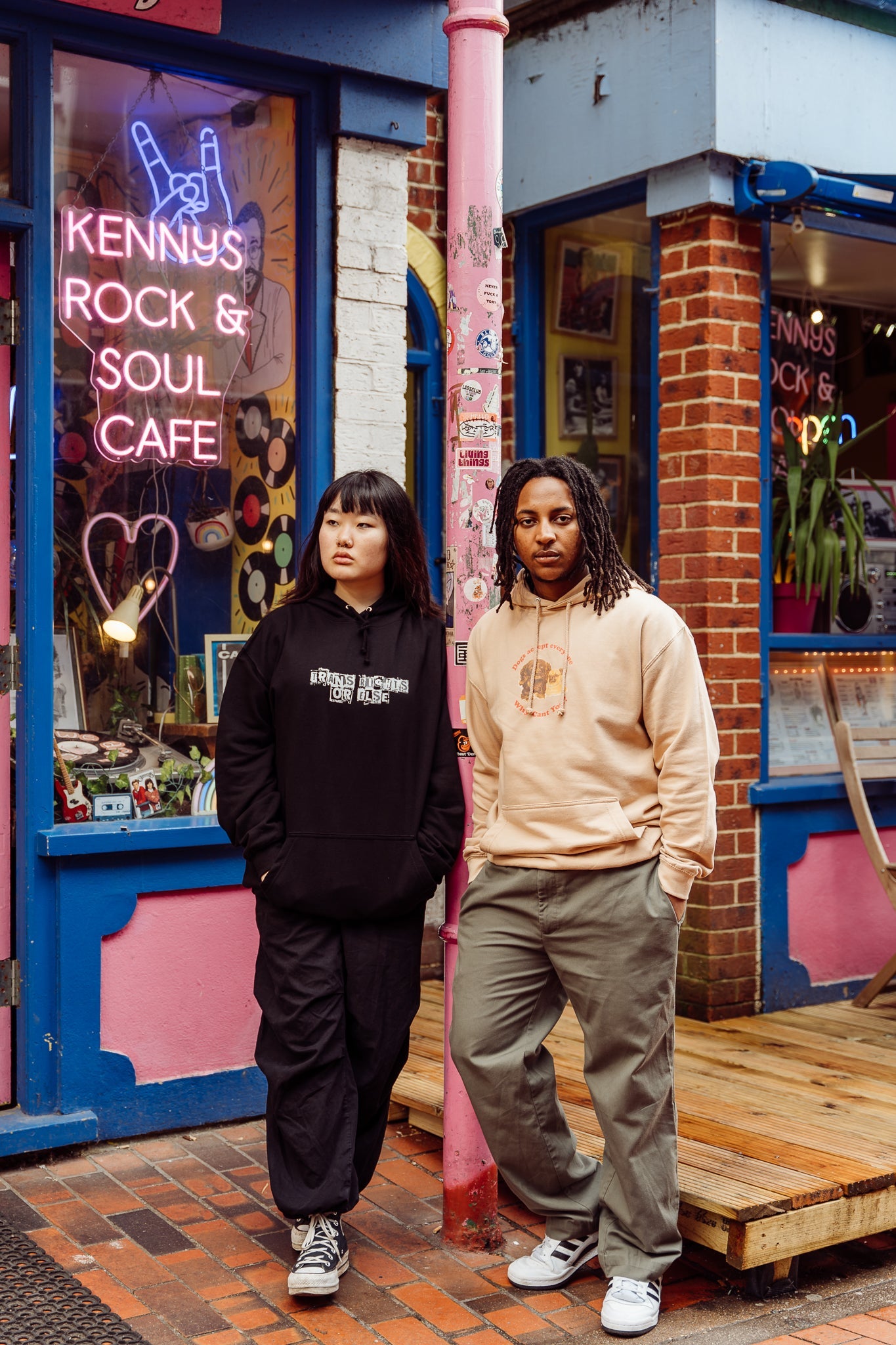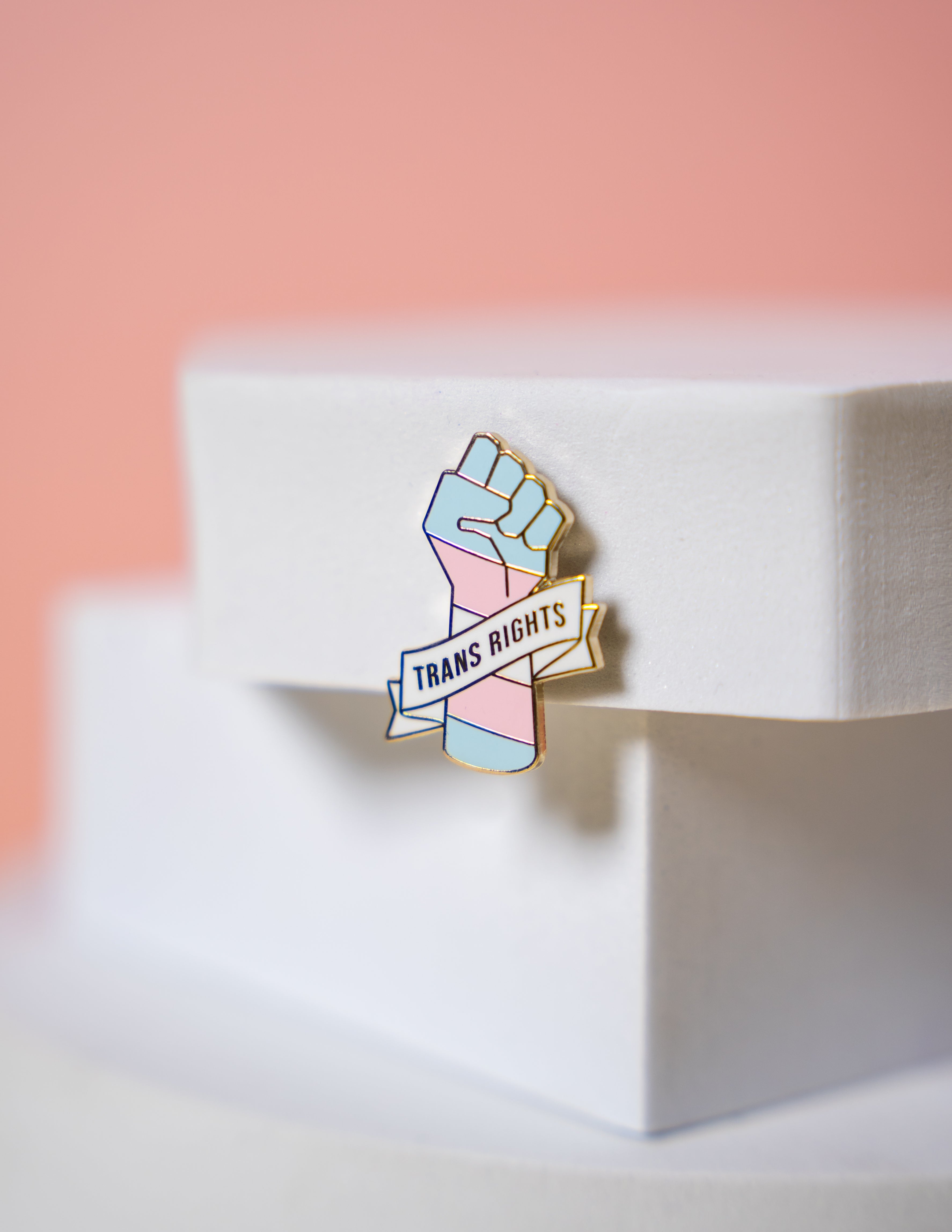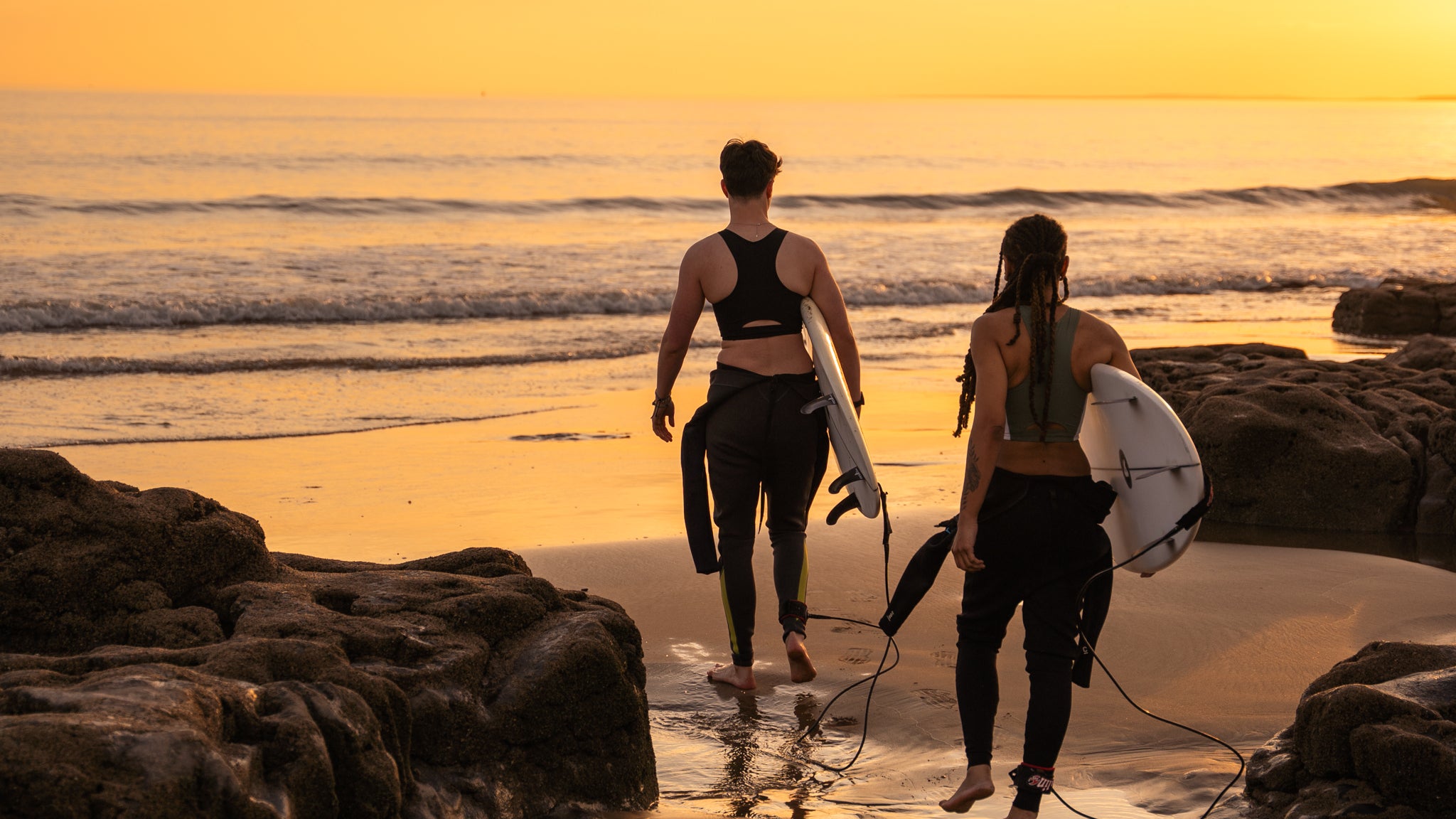
Chest binders help people to feel like themselves
People have bound their chest for thousands of years. Binders minimize the shape of your chest so you can express your gender however you want.
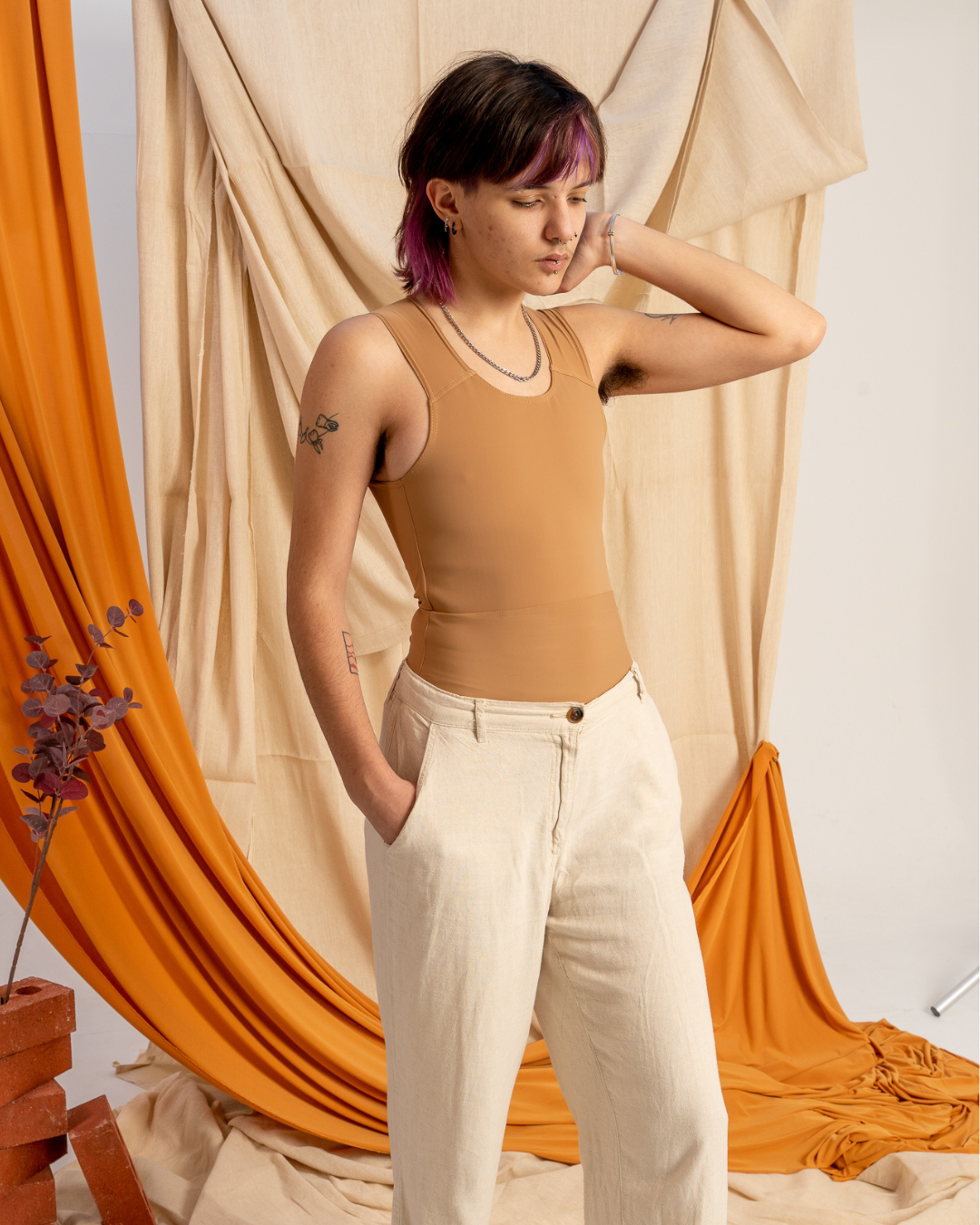
Our unique design* compresses from the back and gives you more room to breathe
The front of our binders is made from very strong corset fabric which holds your front flat while the elasticated back optimises compression.
So you get the full flattening effect with much less pressure on your body.
*Registered UK Design
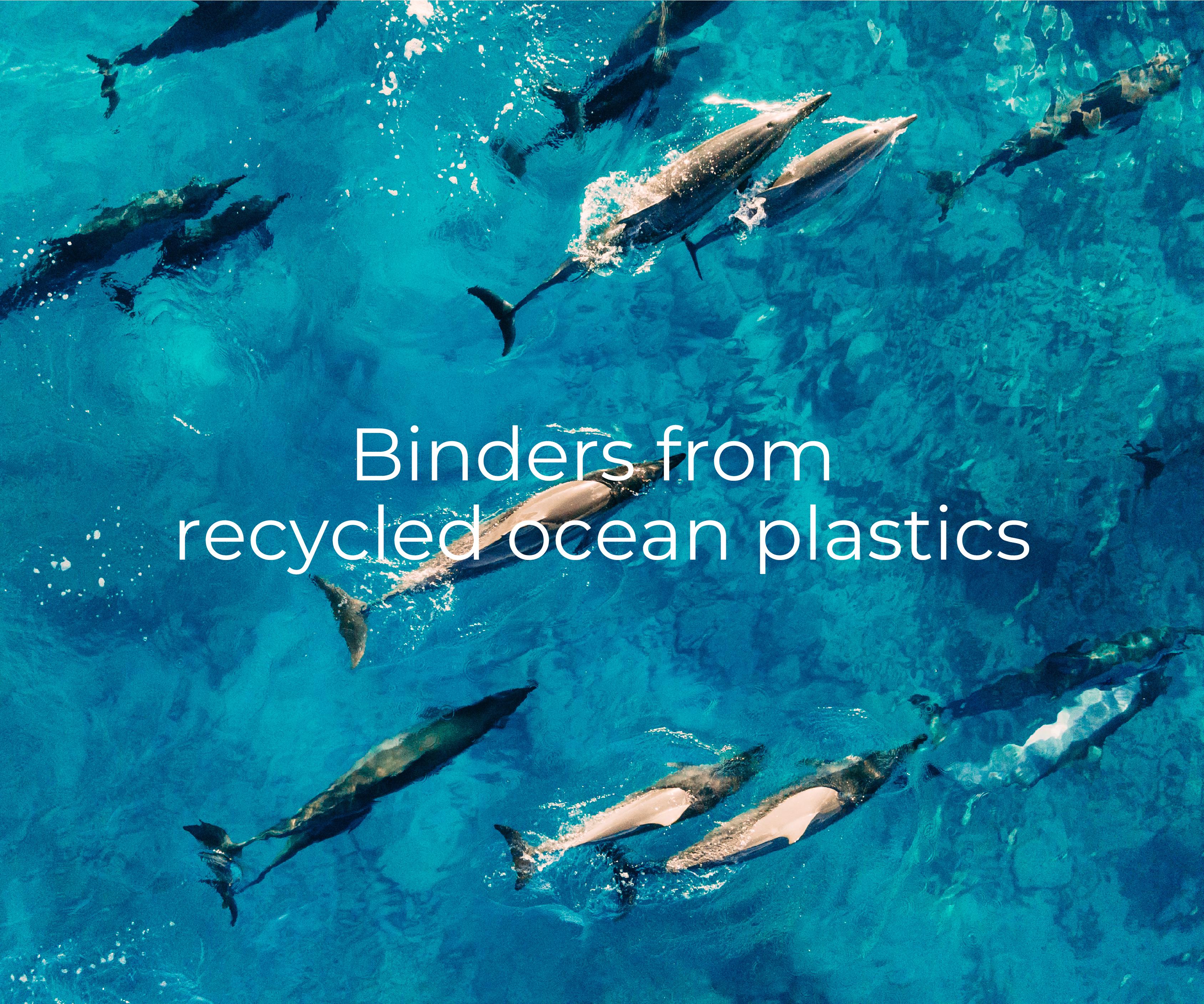
We're passionate about our responsibility to our planet
The main fabric used to make our binders is made from recycled ocean plastics.
Since we launched in 2017, we have recycled plastic material equal to 122,500 plastic bottles.
We make sure we don't use plastic packaging.
We don't just plant trees
We have partnered with Ecologi since 2021 to directly fund 32 climate projects across the globe.
Ecologi empowers local people by providing them with the tools, resources, training and funding to carry out these projects themselves.
With this approach, local communities benefit from economic growth as well as the overall environmental goals.
Through these projects we've been able to plant one tree for every order,
funded clean hydropower in India and wind power generation in Mexico, Thailand and Honduras as well as solar power projects in Egypt and Indonesia.
As well as this, we've also ensured our workforce is climate positive.
Our live counter above shows how many trees you have helped us to plant so far
Find out more about our partnership with ecologi
How to Customise Your Chest Binder For Cosplay or Halloween
By Robin Bateman Disclaimer: If you paint on your binder, please be aware that you will need to spot clean it from now on, as washing may damage your artwork and will stain your binder. We strongly recommend not painting on a binder that you wear regularly. Happy creating! Whether you want to customise your chest binder for cosplay, create a gender affirming Halloween costume, or just want your binder to feel a bit more you, painting your chest binder is super fun, creative, and pretty simple! This guide will walk you through the process step-by-step — plus a few dos and don’ts I learned the hard way! For this guide, I’m using three examples of chest binder cosplays: The Babadook – we can’t forget our favourite spooky LGBTQ+ icon. Superman – super simple costume, fun for Comic-Con, and a classic. Also, the new movie? I might be a bit too obsessed Luffy (One Piece) – for all the weebs! Recognisable, easy, and great if you wish you could cosplay a shirtless character (but haven’t had top surgery). What You’ll Need Before we begin, gather your materials: Your binder (dark colours work, but light ones really pop!) Fabric paint Fabric medium (don’t skip this — it makes the paint flexible and the binder washable afterwards) Pencils, pens, or chalk (for sketching) Masking tape (optional but helpful) Paintbrushes A hair dryer (for setting layers) Reference image or sketch of your design Old clothes to paint in! (trust me on this) Step 1: Choose Your Cosplay or Halloween Design Start with a character, pattern, or anything else that you’d like to paint onto your chest binder. This can be as simple or complex as you like - sketch your own idea, print out a reference, or pull up an image on your phone or laptop. Think about what you’ll use it for — cosplay? Pride events? The choice is yours. Step 2: Sketch or Tape It Out Lightly sketch your design on your chest binder using pencil or chalk. You can also use masking tape to block out clean lines or sections if your design needs sharp edges. Be careful not to sketch too darkly onto light binders as the lines might still show up underneath your paint. Also remember – some masking tape will let paint through slightly, the lines will help as a guide, but won’t always give precise, clean lines. Step 3: Mix Your Paints with Fabric Medium This is crucial: mix every colour 1:1 with fabric medium.Fabric medium helps the paint stay flexible, prevents cracking, and keeps the design washable. It will thin your paint, so you’ll need more layers, but your future self (and your binder) will thank you. Step 4: Lay Down a Base Coat If you’re going for a vibrant design, start with a white base layer — it helps the colours stay bright! Let each layer dry completely before adding another. For speed, use a hair dryer between coats (on low/medium heat). Step 5: Add More Layers This part can be a bit boring, but it’s worth it. Apply multiple coats of paint, letting each one dry before moving on. Use your hair dryer in between to speed up the process. The smoother the base, the better your final design will look. Step 6: Paint Your Final Design Now for the fun part — the top layer! Take your time adding in details, colours, and outlines. Remember: Light colours go first Darker colours layer on top(It’s much easier to cover up light colours with dark ones rather than vice versa! Plus, then there’s no need to awkwardly try and avoid mixing the light colour with the dark outline by mistake and ending up with a gross muddy colour instead of what you really wanted) Step 7: Heat Set the Design Once you’re happy with your design, heat set your design using a hair dryer. This helps the paint bond to the fabric and stay in place when worn or washed. (⚠️ Do NOT use an iron — it can melt your binder and ruin your hard work!) Washing & Care Spot wash by hand when needed. The design should hold up well if you used fabric medium, but some fading is likely over time. Also be aware that there is always a risk that parts of the design will smudge if fully submerged in water, so be very careful and be prepared for touch-ups in future! Dos & Don’ts ✅ Do: Mix paint with fabric medium 1:1 every time Apply multiple coats Sketch your design first Use a hair dryer to speed things up and heat set Trust the process — it won’t look perfect at first! Spot clean gently ❌ Don’t: Wear your favourite clothes while painting (paint stains are forever) Paint on a binder that you plan to wear daily Use an iron to heat set Skip the fabric medium — your paint will crack Layer light over dark — start light! Accidentally drink your paint water (not from experience or anything) Happy painting, and don’t forget to take breaks, hydrate (not with paint water), and post your finished look online — we’d love to see it!
Learn moreCeleb trans allies who put a certain children’s author to shame 👀
This Pride, we would like to take a second to highlight some positive instances of support from some superstar trans allies. Despite the consistent attacks faced by the trans community, from a certain disgraced children's author and various hateful politicians, there are still lots of people who love and support us. These are just a few of some of the world's most notable allies. Robert De Niro One of the worlds most famous and respected actors has recently come forward in support of his trans daughter. Airyn De Niro, introduced herself to the world this year in a beautiful interview with Them. At the time, when asked about Airyn, De Niro said: “I love and support Airyn as my daughter. I don't know what the big deal is, I love all my children." View this post on Instagram A post shared by BuzzFeed UK (@buzzfeeduk) More recently, he addressed the topic again in an interview with Entertainment Tonight, stating: “Well, there's certain things you can do and certain things you can't do, but the main thing is to support your kids,” He continued: “As long as they’re not hurting themselves, doing anything destructive or anything like that, you have to support them. Period." The two-time Oscar winner is extremely popular with cis men and some of his most notable roles are that of gangsters or other examples of extremely toxic masculinity. In light of this, his supportive comments come as a breath of fresh air, bringing hope that his openness can inspire other cis men. Kate Nash With her new track ‘GERM’ Kate Nash is directly calling out She Who Shall Not Be Named and other TERFs in style. The lyrics address the recent supreme court ruling, highlighting that trans people aren’t a threat to women. “Women are facing serious dangers not during boxing matches or from trans people needing a piss But from actual violence that is carried out against them every week” The song also features important statistics about misogyny and toxic masculinity. In an interview with Attitude magazine, she said: “Feminism is dismantling systems of oppression, so to be transphobic is not feminist. Feminism has to be intersectional. So I wanted that on record, because at the moment, the loudest cultural voice in the room, who created one of the most successful things ever to come out of the UK, Harry Potter, is transphobic, and is very cruel online and very crass, and it’s just become so nasty. I just need to put this out into the world, even just so in history, this exists. I hope that it also allows other cis women and feminists to be more vocal and be less afraid to approach the subject, because I think people are afraid to talk about it.” View this post on Instagram A post shared by Kate Nash (@katenash) Kesha Pop diva Kesha came out swinging for the dolls at London festival The Mighty Hoopla. She headlined the festival rocking a ‘Protect the dolls’ tee and brought out Jake Shears of Scissor Sisters fame to spread some queer love. They performed a mash up of the iconic queer Scissor Sisters track ‘Lets have a kiki’ and Keshas own ‘We R who we R’. View this post on Instagram A post shared by Mighty Hoopla (@mightyhoopla) Pedro Pascal The internet’s daddy, Pedro Pascal, has long been a vocal supporter of trans rights. Most recently, he’s been seen wearing a ‘Protect the dolls tee’ and calling She Who Shall Not Be Named a “heinous loser” in an Instagram comment under a video by writer and activist Tariq Raouf. Pedro’s sister, Lux Pascal, is a trans actress, model and activist. Lux has appeared on a number of Chilean soap operas and dramas as well as appearing alongside Pedro in Netflix’s Narcos. View this post on Instagram A post shared by Pedro Pascal he/him (@pascalispunk) Daniel Radcliffe Award-winning actor Daniel Radcliffe, got his start in the industry appearing as the lead role in the film adaptation of You Know Who’s books. But, in light of her constant attacks on trans people online and in the press, Daniel felt it was important to stand up for trans people. He wrote a statement, published by The Trevor Project a trans non-profit that he has supported for the last decade. In the statement, Daniel states: “Transgender women are women. Any statement to the contrary erases the identity and dignity of transgender people and goes against all advice given by professional health care associations who have far more expertise on this subject matter than either Jo or I.” Jade Thirlwall On Saturday 31 May, pop diva Jade Thirlwall led the crowd of The Mighty Hoopla, in saying “Fuck You” to She Who Shall Not Be Named. Since rising to fame in the pop group Little Mix, Jade has consistently defended the trans community. In 2021 the talented singer won a Gay Times Allyship award in 2021 and more recently commented on her responsibility to speak out against growing transphobia: “Cancel culture is thriving right now. When you're in the public eye, it’s quite scary. I’ve always been vocal, and I’m not always going to get it right. But you can’t be a pop artist these days without speaking out on certain issues” “We’re seeing an attack on the trans community, and with my large LGBTQ+ fanbase, I can’t sit back and not defend that community. I’m happy to face the consequences if it means doing the right thing.” View this post on Instagram A post shared by GLAAD (@glaad)
Learn moreGreer Lankton | Queer artist, doll maker, trailblazer
Original image: Peter Hujar, 1983 Greer Lankton | Queer artist, doll maker, trailblazer A talented artist with a troubled soul, Greer Lankton faced many challenges throughout her life, and her artwork provided her with comfort amidst the chaos. However, some critics believed she relied too heavily on her artwork leading to an obsession, burnout and her eventual undoing. View this post on Instagram A post shared by Greer 💖 Lankton (@greer_lankton_archives_museum) As a child, Greer was drawn to feminine clothing and playing with dolls. As she was AMAB her family wouldn’t allow her to play with ‘feminine’ toys as they disapproved of her breaking the gender binary, so she often made her own dolls out of socks and pipe cleaners to keep her company and give her an outlet to explore gender expression. Even though her self-expression was dimmed by her parents, her early artistic ambitions were supported by them. She entered and won many shows and competitions all over the Midwest, before moving to New York in 1978 in her early 20s to study at the Pratt Institute. View this post on Instagram A post shared by Greer 💖 Lankton (@greer_lankton_archives_museum) Greer became engrossed in the process of creating dolls. She composed them out of soda cans, wire, tape, paper, plaster, stockings and finished them with realistic glass eyes. One was described by Nan Goldin, one of Greers contemporaries and friends, as "A huge cloth hermaphrodite giving birth", this was said to have been made after a dream in which Greer gave birth to herself. Her work mainly focused on sexuality, gender and the effects of consumerism, with Goldin suggesting that “In bringing her dolls to life, Greer worked through her own traumas with her dolls”. Lankton battled with an eating disorder for many years, and her unhealthy relationship with food was expressed within her dolls. Many were seen with flared ribs, emaciated, while others were unhealthily overweight. The creation of her art was intertwined with her own life and complicated relationship with body image. Hilton Als, an American writer and Theater critic, wrote how ‘’No artist is down on her luck when she has her art. It’s what Greer fed on, even when she ate no other food at all. Her dolls were starved for our attention.”. Greer also struggled with continuous substance abuse when she relocated to New York, which also had influence on many of her doll’s looks. They were a reflection of her own addictions, traumas and struggles with her gender identity. View this post on Instagram A post shared by Greer 💖 Lankton (@greer_lankton_archives_museum) Like herself, Greer’s dolls were constantly being reworked – she had an approach that the human body was in a constant state of metamorphosis, influencing her into obtaining a habit of changing the doll’s size, gender, and clothes frequently. In some way, she was her very own doll surrounding herself with a family of ‘freaks’. Greer derived much of her inspiration from celebrities as well, creating them in glamorous and sometimes haunting lights. Some examples would include; Candy Darling and Divine. Greer underwent gender-affirming surgery aged 20 in 1979. At this time the surgery was riskier and more experimental than today. Her husband, Paul Monroe says she suffered from pain and complications from the surgery until her death. View this post on Instagram A post shared by Greer 💖 Lankton (@greer_lankton_archives_museum) Greer and Paul were married in 1987 and are said to have divorced in 1992 although Paul himself states they never really divorced. In the early 90’s while dealing with the loss of many of her friends through the aids pandemic she moved back to Chicago to focus on her own ill health. Her career began to dwindle from the art world until, in 1995, she got given an opportunity to put on an exhibition for the Mattress Factory in Pittsburgh. Margery King, the curator of The Mattress Factory and Michael Olijnyk, went to visit Greer about the exhibition, arriving in Greer’s small apartment which was overflowing with her dolls in all stages of production. Her home was such an incredible display of her talent, Michael and Margery both agreed that Greer could reproduce an installation inspired by her apartment for the exhibition. View this post on Instagram A post shared by Greer 💖 Lankton (@greer_lankton_archives_museum) Many agree that those last moments of Greer bringing to life her installation, ‘It's all about ME not you’, were some of her happiest in a while. She was surrounded by admirers and completely engrossed in her work. Though down to 90 pounds, she always wore a smile, and her work ethic was beyond extraordinary. She sadly passed not even a month after the exhibition had been unveiled to the public by accidental overdose. Greer’s passion for her art allowed her to have a creative outlet for her pain and suffering during her struggles with substance abuse, addiction and a severe mental health disorder. Greer’s friend and photographer Nan Goldin described Greer’s work as “so visceral, so exposed, that I once told her it was like an operation without anesthesia.” Critics may have said her obsession with her art bought about her eventual undoing, but according to those closest to her it seems like she used her creative outlet as a form of therapy. Greer granted other queer and trans individuals the opportunity to be seen; something so valuable during her lifetime and today. Sources https://greerlankton.com/ https://www.artnet.com/magazineus/features/morton/morton1-26-07.asp By Julia Morton https://www.artforum.com/features/greer-lankton-162842/ By Nan Goldin https://www.artsy.net/article/artsy-editorial-1980s-icon-greer-lankton-explored-glamour-gender-eerie-dolls By Alina Cohen
Learn moreTrans Travel: Solo trip to Hong Kong
Before we begin the journey, I’ll share some background information about myself. I'm Parker, a 19-year-old trans man with a passion to explore different environments and cultures all over the world. I have been wanting to start travelling for years and with no-one jumping at the opportunity to join and finally being at an age where it is easier to travel alone, I decided to give solo travelling a try. With Hong Kong being a direct and cheap ticket at the time, I booked it with a month spare to prepare and plan my trip. Truth be told, I’m a big procrastinator and ended up booking the majority of my plans after I arrived, while focusing primarily on the language and cultural do's and don'ts during the month leading up to my departure. The thought of going alone to a different country surprisingly caused me little to no worry, in fact it didn’t hit me that I was travelling alone at all until I was standing in the Hong Kong International airport without anyone to help guide me where to go. It is important to remember that everyone can react to experiences differently – so if the thought of solo travel makes you feel anxious, read on and I hope I'll be able to assuage some of that anxiety. Always keep in mind that even though you are alone physically, there are so many people willing to help all around you! Now, on to Hong Kong. It is a special administrative region of China and has a population of around 7.5 million people, making it the fourth most densely populated region in the world. It is commonly known as a paradise for shoppers, with over 700 shops located only within Tsim Sha Tsui, however I found on my journey that it’s more than just shops and has something that every type of person will enjoy. From British-inspired, Hong Kong cuisine for foodies, to more modern Hong Kong-style dishes and light and aromatic traditional Cantonese food there are incredible tastes around every corner. To keep you busy during the day, you can try hikes with breathtaking views of the panoramic cityscape, bustling city streets and peaceful monasteries. I’ll take you on my trip around Hong Kong with some helpful tips and guidance for other LGBT+ solo travelers. Is Hong Kong Safe and LGBT+ Friendly? Hong Kong is generally considered an LGBT+ tolerant destination and I definitely felt that way too. During the week I spent within the city, I felt incredibly safe and welcomed, and often ventured out at night with no problems or predicaments with locals or other tourists. Whenever I ate out at restaurants and went shopping, the locals were incredibly kind and often helped me choose what was the best food to have or places to go. Hong Kong has a low violent crime rate, but like anywhere you may encounter pickpocketing or petty theft. Due to how crowded it can get within the cities and trains, make sure to always keep your personal belongings close and your wits about you. It is important to recognise that Hong Kong still does not recognize same-sex marriages and has limited legal protection for sexual orientation-based discrimination. I never experienced any altercations during my stay, but I would advise caution for how openly you express yourself and minimise PDA if you bring your partner as it can attract stares. Another thing to keep in mind is how you’re getting there. Some flight routes have layovers in countries which are not LGBT+ friendly so please keep that in mind when booking your flights. How to get around? There are three main regions in Hong Kong: Hong Kong Island, Kowloon Peninsula, and the New Territories. My accommodation was within Tsim Sha Tsui, Kowloon, and to be able to get around the whole of Hong Kong I only used the MTR (the mass transport railway). With around 5 million people using it daily, The MTR is the go-to way to get around Hong Kong by both locals and tourists. It has a very well-designed network and runs smoothly with little to no cancellations or train delays. It can be confusing for the first time with all the different routes, so using the MTR App to plan your journeys, see timings, and the costs of the trains is extremely helpful. Once you understand how it works, it is the cheapest and easiest form of transport to get you around Hong Kong. However, the MTR may not be able to get to the more rural areas and the new territories. For these, another quick and cheap alternative would be buses, all the bus routes/timings and costs would also be on the MTR app. An Octopus Card which you can get off Klook, an online app, for £9 and collect from the airport, is a safe, convenient way to make payments when you’re using public transport. Both Uber and Taxis are available to get as well in case you find the public transport overstimulating or if you need a quick pick up/drop off. How long do I stay for? I spent 7 days within the city and as someone who can get overly stimulated with loud noises and people, I believe around 3 days would be more than enough time to allow you to visit monuments and monasteries whilst also checking out the famous shopping malls like K11 and Harbour City. The bustling and crowded atmosphere can be strenuous after 3 days if you aren’t used to busy streets, so island hopping or taking a trip around the new territories make a good addition to your trip. With over 200 islands to choose from you’ll be spoilt for choice! I regret not taking advantage more of the rural islands as I stayed mostly in the more populated areas. Attractions to visit and activities to attend: Tours - I attended two tours during my stay. One tour was around Central Hong Kong and was centered around learning the culture as well as getting to experience a traditional dim sum restaurant lunch. While the other tour focused on exploring Lantau Island’s fishing village, visiting the Big Buddha and then getting the Ngong Ping 360 back to Central Hong Kong. Tours are a great thing to incorporate into your stay if you get anxious exploring by yourself, want some extra structure to your day, or if you simply want to get some local insight into Hong Kong’s past and its hidden gems. Lan Kwai Fong Bar Crawl - A sure way to meet people during your stay is to go on a bar crawl. If you want to meet other travelers and enjoy a drink in the process, I would highly recommend booking one. While meeting a group of strangers and engaging in conversation may seem incredibly daunting, you end up meeting people from all over the world and having some priceless moments and memories. After your bar crawl, there are many gay/Lesbian bars in Hong Kong which you can attend, such as Bing Bing and L’Paradis. I sadly did not have time after to attend these as the last train back to where I was staying was at midnight, however the reviews speak for themselves. (As always, make sure to be safe and keep your location on for a friend or family member with regular updates.) Victoria Peak – Victoria Peak is a mountain that looms over the skyscrapers within the city, at a height of 552 meters, it is the tallest point in all of Hong Kong. By taking a tram, which is the fastest and cheapest way up, you will encounter landscape views of the city which are unparalleled. Dragons Back Trail – Dragons Back Trail is an 8.5-km-long trail which takes between 2 and 5 hours to complete depending on your fitness level. It is located around the southeastern corner of Hong Kong Island. Make sure to pack snacks and drinks as there are no restaurants along the trail! The views on clear days are extraordinary but due to this you may come across a lot of people. Star Ferry - The Star Ferry is a passenger ferry service with its main route going across Victoria Harbour linking Hong Kong Island and Kowloon. The views at night across the Ferry are beautiful and with prices from around £2-£5 it's a must-see attraction. Nan Lian garden & Chi Lin Nunnery - Nan Lian Garden is a classical Chinese garden with a souvenir shop and a vegetarian food restaurant on site. Right next to the garden, connected by a footbridge over the road, is Chi Lin Nunnery which is a large Buddhist temple complex dating from the 1930’s and a charitable organisation since 1963. Inside you’ll find Tang Dynasty architecture and Buddhist relics. The closest MTR station to these destinations is Diamond Hill. Where to eat? Breakfast: My Cup of Tea/Australian Dairy Company (only accepts cash) Lunch/dinners: Ding Dim 1968/Dim Dim Sum/Chin Sik Sweet food/drinks: Mammy Pancake/Bakehouse/The Alley Vegetarian options are available, but Vegan options are limited to none. Where to stay? If you want to meet others and make friends on your trip, a hostel is an affordable and great option. There are private rooms available too if sharing a room doesn’t sound appealing. You can use search filters when searching for hostels/hotels such as LGBTQ+ Friendly to ensure you have booked a place which will make you feel safe and comfortable. There are many hotels within Hong Kong when looking on Booking.com, but don’t forget to check out Airbnb for any deals! Important note: passing privilege It’s important to recognise that even though I am a trans man, I am far into my transition and pass quite well. I may have been treated differently if I went at the beginning of my transition or if I were a trans woman for example. We all have different and unique experiences, and my experiences may not reflect those of other LGBT+ travellers views on Hong Kong. If you feel comfortable, please share your experiences of travelling as a trans person in the comments. We would love to hear what you think. Extra Tips: Book your Tours and activities through ‘Get Your Guide’ or ‘Klook’. Use Google maps to save places you ‘want to go’; this makes planning your day easier. Helpful Apps; Klook, Get Your Guide, MTR (I cannot stress how useful this app is if you’re planning on taking public transportation), Google translate, Booking.com, Airbnb. Get a Sim or an E-Sim to allow you to use google maps outside of your accommodation. You can get an app for your Octopus card online to add money whenever it is needed rather than having to transfer money onto it with cash at the MTR, however it is only available for iPhone 8 and above. There is an airport express train which links the urban area with Hong Kong International Airport. It's faster, safer and quieter. The only downfall is that you arrive at Hong Kong main station and then need to find MTR or get a taxi or shuttle to your destination. During my stay there were lots of other solo travelers wandering around – this helps you feel less lonely ironically!
Learn more
Help us improve
In order to better understand how we can serve our customers, we have created our Customer Needs Survey. If you feel comfortable, we would love to hear from you about yourself and your needs. Don't worry though, the form and your answers are anonymous.



